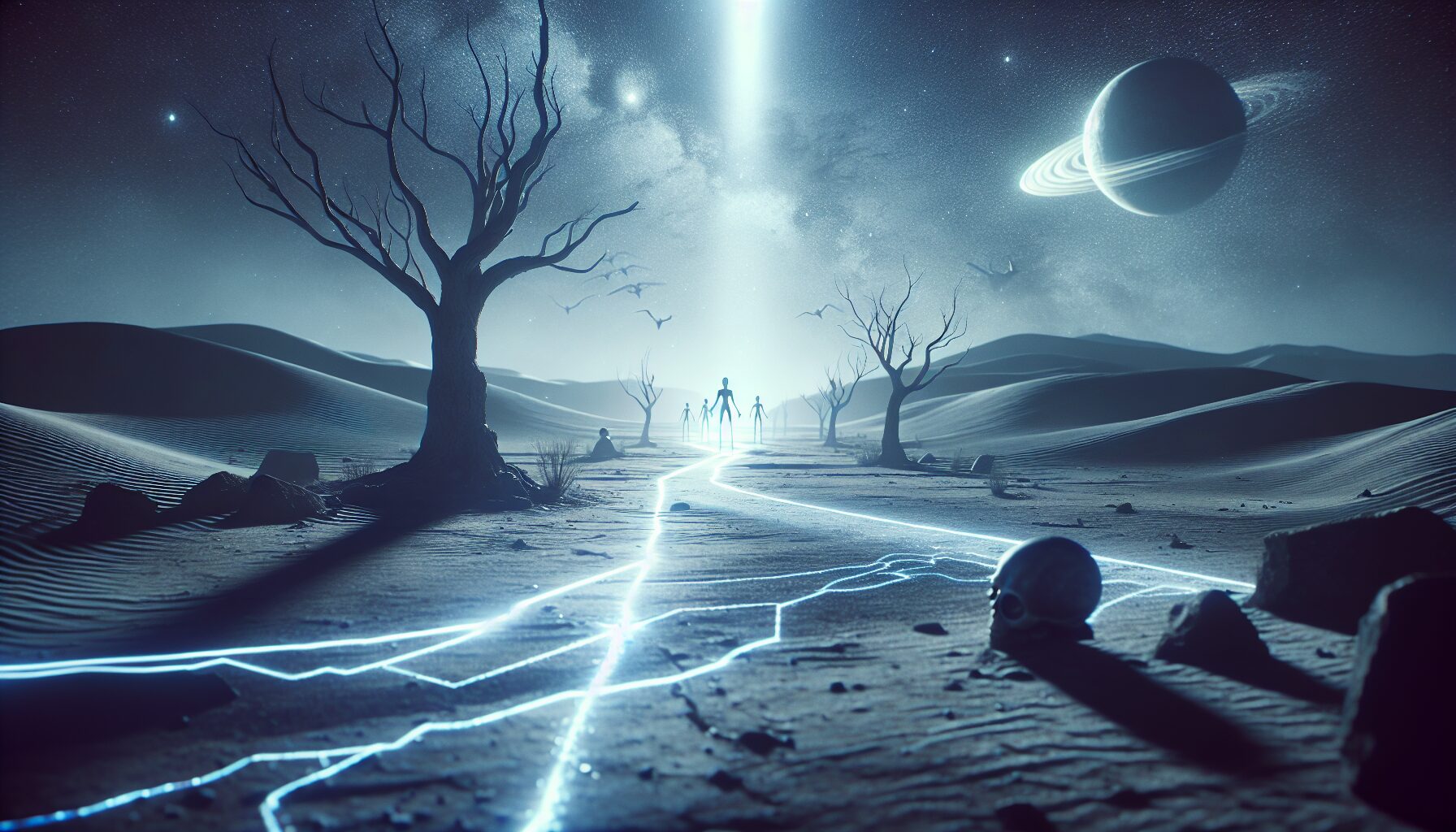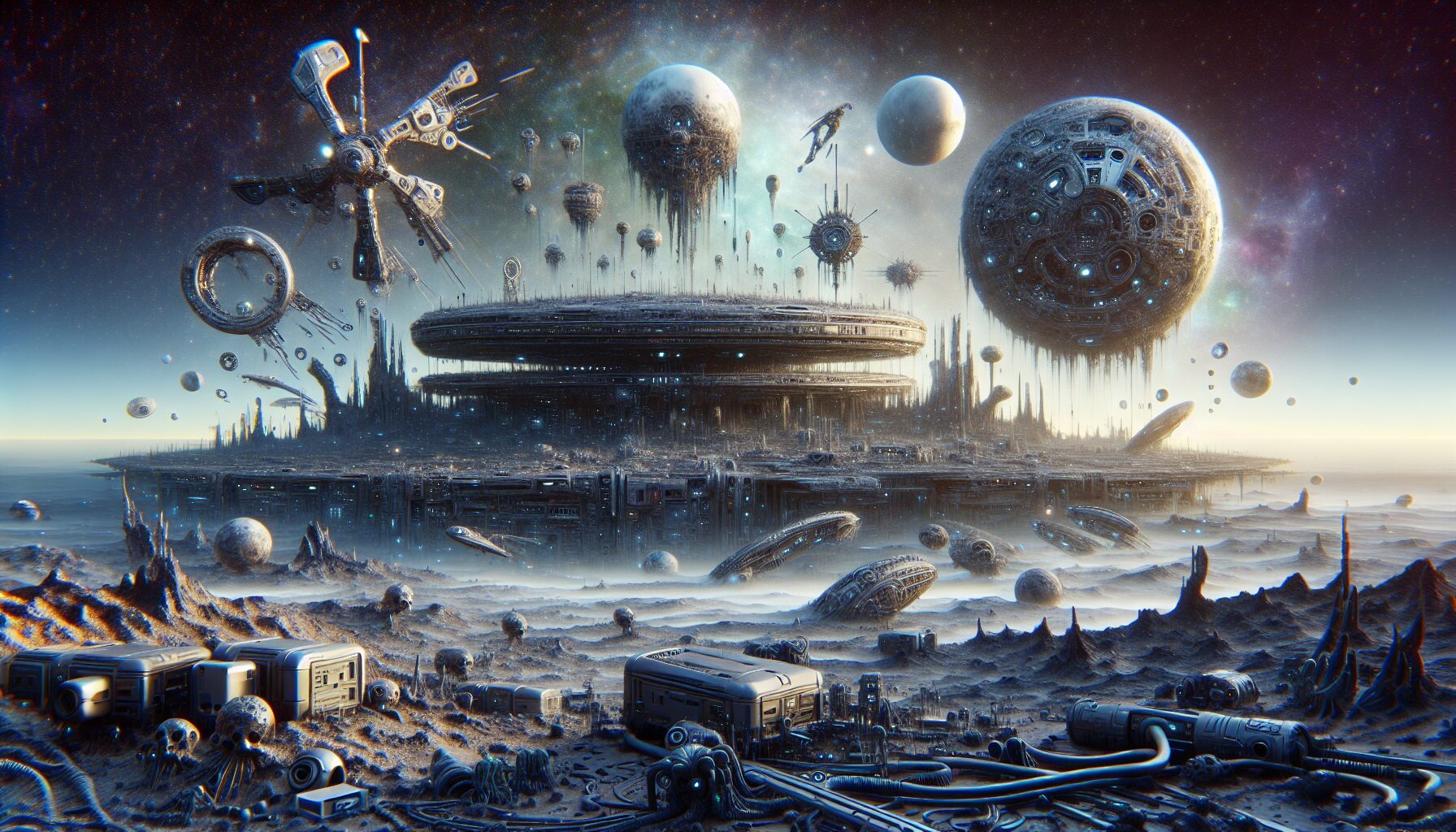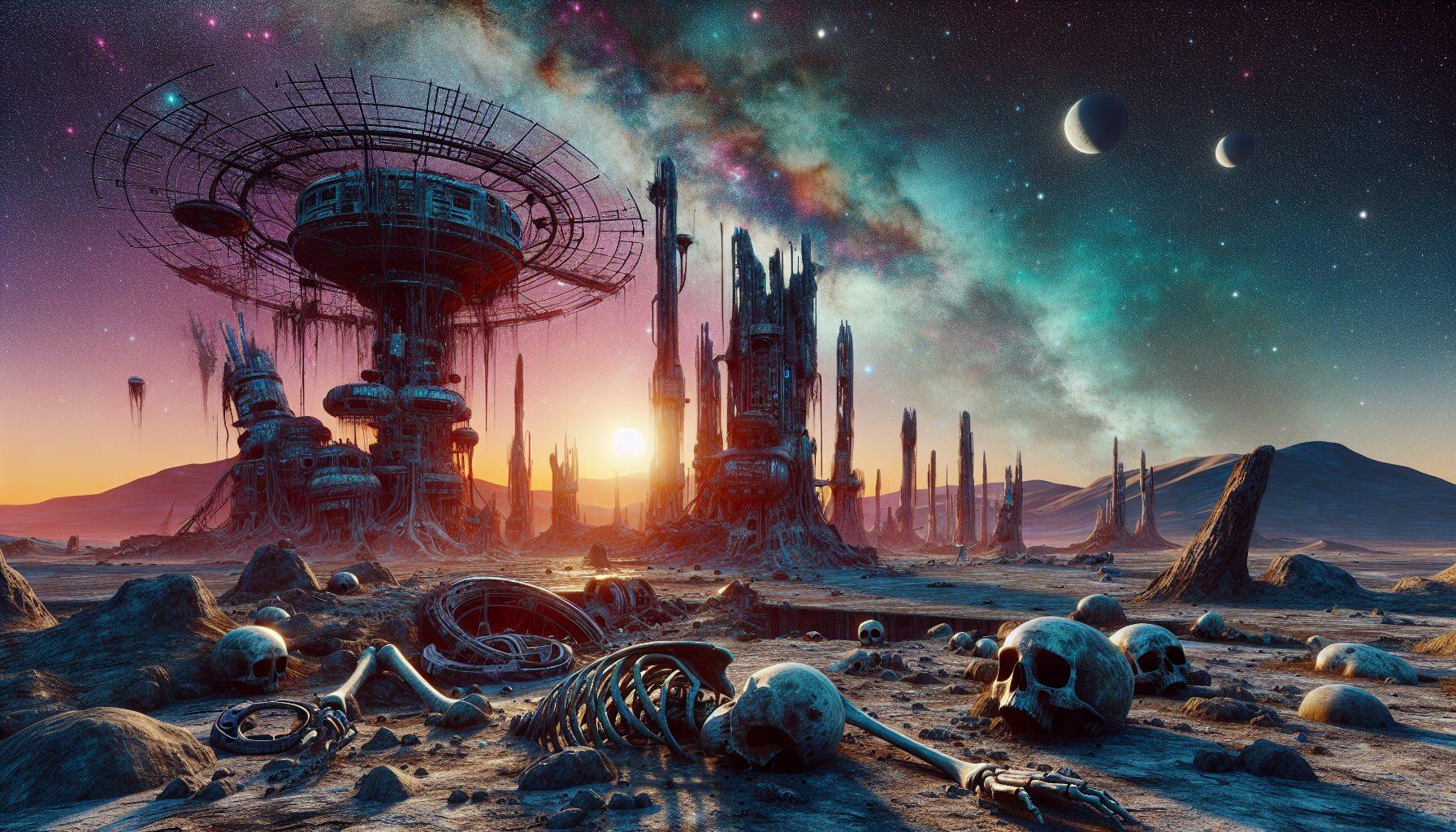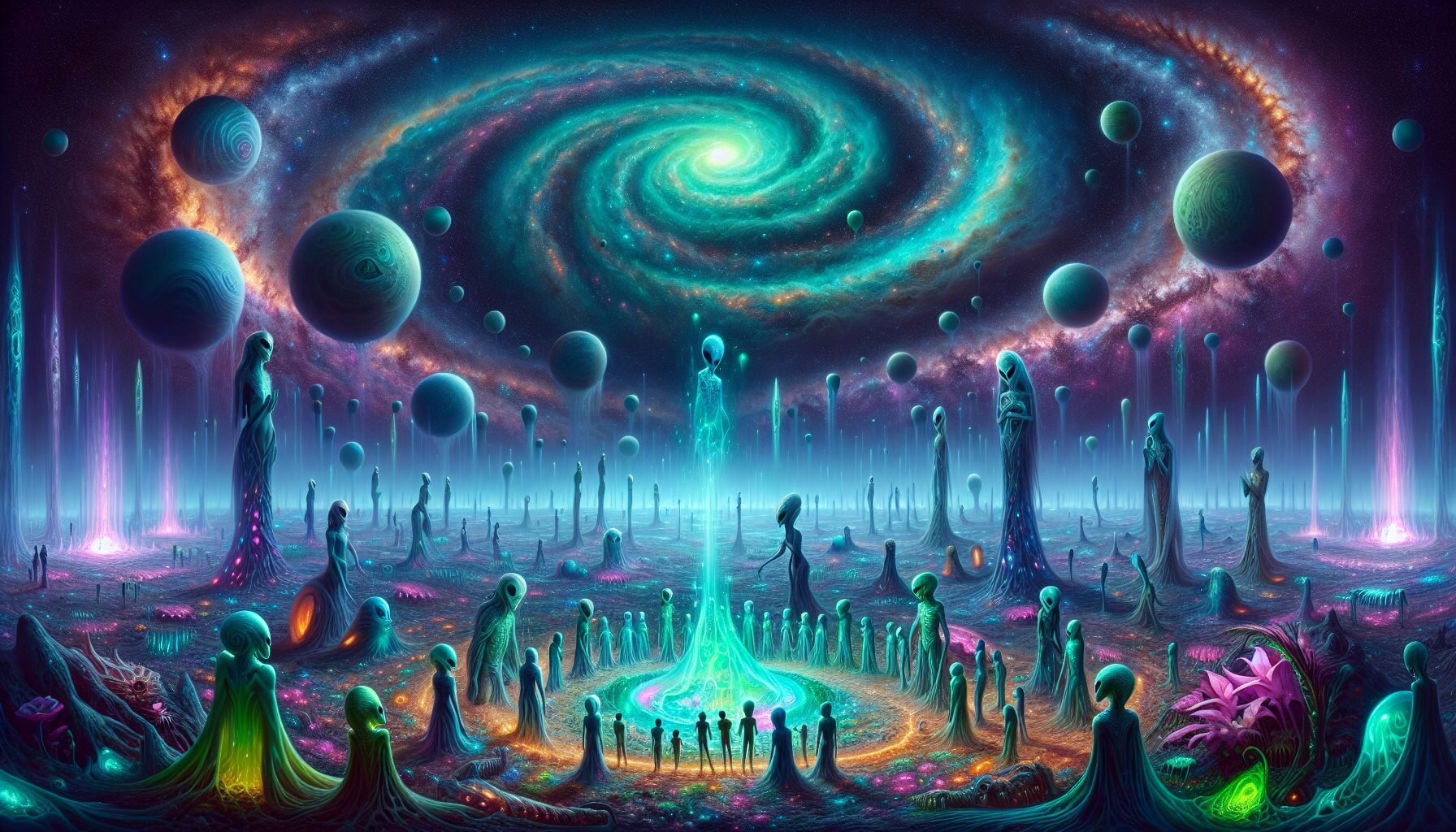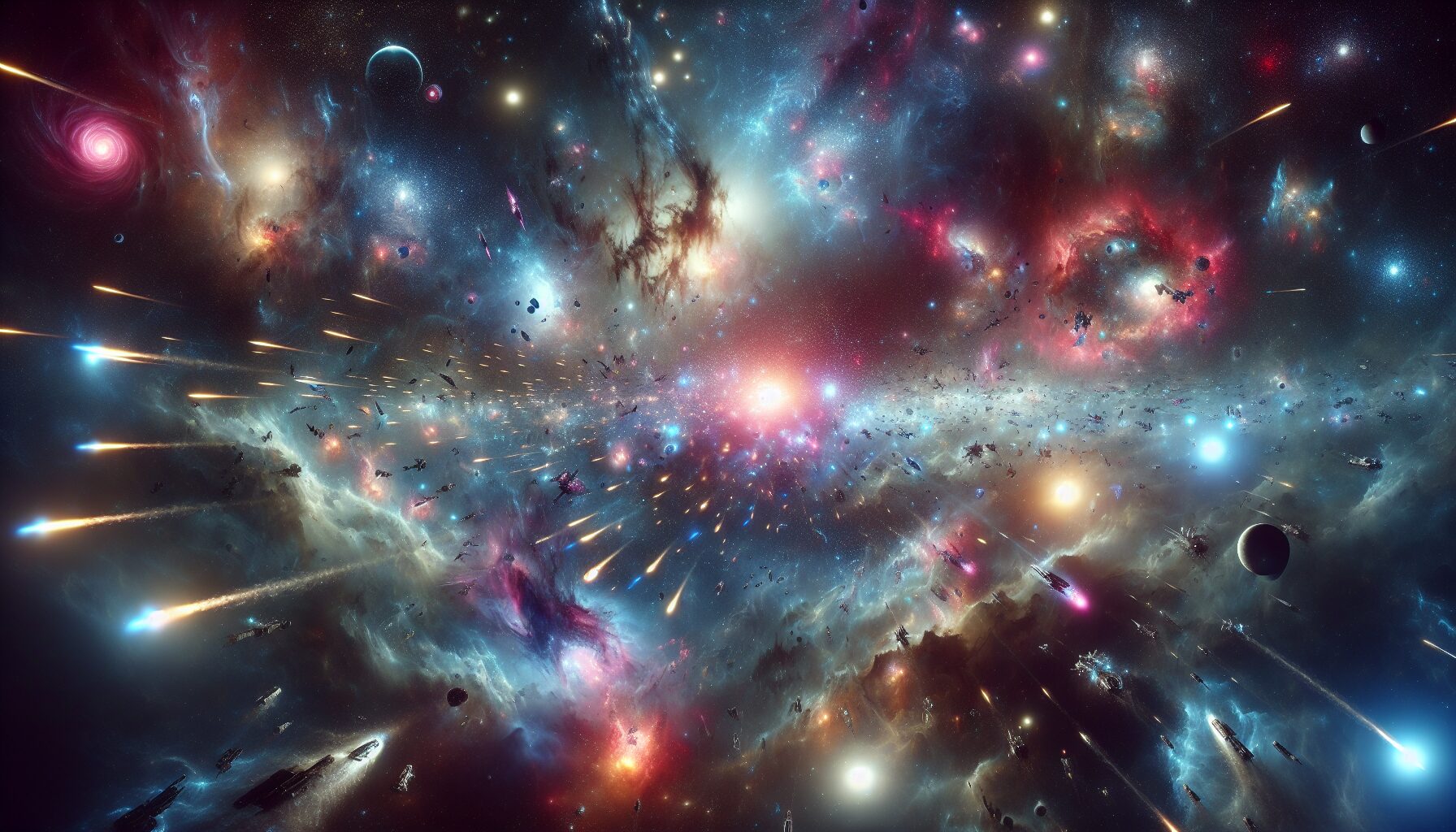Signals from the Dead: Alien Messages Across Time
Throughout history, humanity has gazed at the skies, searching for signs of life beyond the confines of our planet. The search for extraterrestrial intelligence (SETI) has captivated the imagination of scientists and the public alike. But what if the signals we detect originate from civilizations that are long extinct? Are we destined to only ever listen to the echoes of alien ghosts filtering through the cosmos?
The Age of the Universe and Fermi’s Paradox
The universe is approximately 13.8 billion years old, according to Nature.com. With such an immense timescale, the potential for the rise and fall of civilizations across galaxies is astronomical. Fermi’s Paradox, often cited by scientists, highlights the apparent contradiction between the high probability of alien life and the lack of evidence or contact with such civilizations. If intelligent life is common in the universe, why haven’t we heard from anyone?
“Where is everybody?” — Physicist Enrico Fermi
The Persistence of Signals
When considering the vastness of space and time, it’s plausible to assume that signals transmitted by civilizations once reaching for the stars could still be traversing the universe long after their originators have ceased to exist. The potential age of these signals raises numerous philosophical and technical questions regarding their detection and interpretation.
- In 1974, the Arecibo Message, a radio message sent into space from the Arecibo Observatory, was aimed at the globular star cluster M13. This message was essentially a demonstration of human technology, not an attempt at communication.
- The Wow! Signal, detected in 1977 by Jerry R. Ehman, remains one of the most intriguing signals ever captured, lasting for 72 seconds, and it has never been repeated or explained satisfactorily.
These examples illustrate both the potential and the challenges of SETI: how to interpret brief, unique signals and decide whether they are meaningful or merely cosmic noise.
Technosignatures and Time’s Thread
As scientists focus on detecting technosignatures—indications of technology used by alien civilizations—they must grapple with the possibility that any detectable signals could have been transmitted millions or even billions of years ago. By the time these signals reach us, their creators could be extinct, leaving behind only the technological footprints of their existence.
The Berkeley SETI Research Center defines technosignatures as evidence of technology’s impact on the environment or direct signals, such as radio transmissions, that may be detected by our technology.
Reflections on the Loneliness of Time
The concept of receiving messages from dead civilizations is a sobering one. It implies that the universe may indeed teem with life, yet the daunting factor of time may render us alone in practical terms, forever listening to the cosmic epitaphs of those who’ve already vanished.
“If they’re sending signals to Earth, they’ve been doing so for hundreds of years with nobody at home.” — Scientist Jill Tarter on ancient signals.
The implications of such a scenario stretch beyond science into the philosophical realm, prompting questions about the survival and longevity of human civilization amidst the relentless flow of cosmic time.
Technological Limitations and Advanced Civilizations
The search for extraterrestrial life is constrained by the limitations of our technology. Our ability to detect signals, even those that may have traveled vast distances, is still developing. Yet, even if we acquired the capability to detect ancient signals, we’d face the formidable task of interpreting them. Language barriers, differences in scientific understanding, or even the basic nature of the signal could pose insurmountable challenges.
- Many scientists postulate the development of a Kardashev civilization, a hypothetical scale that measures a civilization’s technological advancement based on its energy consumption. Understanding the signals from such advanced cultures would require equally advanced methods of analysis and interpretation.
Looking Ahead: A Future for SETI
Despite the challenges, the pursuit of signals from extraterrestrial civilizations continues to drive interest and innovation across scientific communities worldwide. The possibility that we might detect the whispers of civilizations past fuels ongoing efforts to expand our capacity for cosmic eavesdropping.
With the advancement of radio telescopes and the increasing interest in astro-archaeology, our chance of unearthing these ancient messages can only improve. The ongoing discoveries about exoplanets and their atmospheres, as revealed by research from NASA’s Exoplanet Exploration Program, further stoke the fires of scientific curiosity.
Conclusion: The Echoes We Seek
In the veil of cosmic silence, signals from civilizations past may indeed reverberate eternally. The quest for alien life transcends the mere hope of communication; it represents a profound search for company’s nature. As we listen across the eons that separate worlds, we uphold the enduring human passion for exploration and understanding—hoping that someday, the signals from the dead may yield a valuable truth, or perhaps a legacy, from across the abyss of time.
In the meantime, humanity remains steadfast in its endeavor, clinging to the words of Carl Sagan, who famously reminded us that “we are made of star stuff,” intertwined with the fabric of the universe and perhaps, with the civilizations that came before us.

